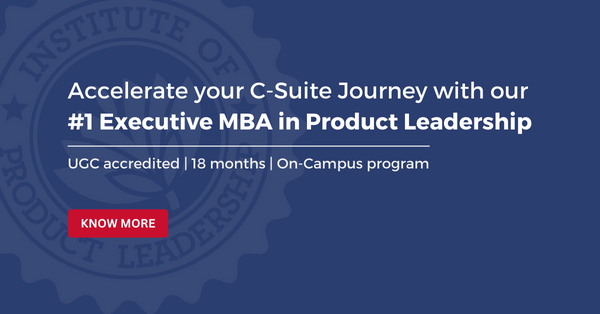Product Manager Career Path in India
- product management
- 5 min read
By Arun Vijapur – Senior Product Manager, Nutanix
At some point in our careers, a lot of us wonder- What is the path to a thriving career in product management? This path can be both challenging as well as rewarding. It is possible to explore a multitude of roles and responsibilities as you progress in your career. Let us first look at the career path. Professionals usually start as associate product managers or product owners, then move to senior product managers, you can continue to be an individual contributor in product management or you can take more of a managerial role like director or vice president, eventually, chief product officer and some of them also end up taking coveted roles like Chief Executive Officers (CEOs) of the company.
Key Takeaways:
- Having a formal education is one way to become a product manager.
- It is helpful to volunteer to help existing product managers and be enthusiastic about being a part of their team.
- Networking with existing product managers and aspiring product managers can help you get an entry in the field.
- One of the most important ways to become a product manager is finding a mentor who has done it all and can advise you on the same path.
- Preparation for the role, especially the hiring process and interviews is of high importance and should be taken very seriously, no matter how experienced you might be.
1. Formal education
To explain the diversity of entry points, consider the speaker who holds a formal MBA in product management. While this is one way of entry into the field, it by no means is the only way. Many companies do not focus on your education or background during the hiring process.
2. Demonstrate skills
One of the key ways to enter into this domain of product management is to volunteer and get in touch with existing product managers who you look up to. They have a lot of responsibilities to take care of. There is no problem with you going up to them and saying that you are aspiring to be a product manager. You might show willingness and enthusiasm to help them. If they are impressed, they might help you a lot.
You can also write and demonstrate your thought process on a lot of forums like LinkedIn and Medium. Just take any product, dissect it, talk about its value proposition, go to market strategy, or how they can make their product better. That might catch some eyeballs and you can explain that in some of your interviews also.
3. Networking
Networking is another invaluable pathway of entry into product management. Networking can be done both in person and on LinkedIn as well. It is especially helpful to attend some events in product management. That is a great opportunity for product managers to get to know who you are.
4. Mentoring
Mentoring is one of the best ways to break into product management. If you can find a mentor, who has gone through that path and can provide you direction, train you, motivate you, and give you advice, you can do wonders for your career. Learning from someone with real-world experience can significantly enhance your understanding of the role of a product manager and accelerate your career growth.
5. Preparation is the key
Regardless of where you are in your career and what your preferred way of entry into product management is, preparation for the role is paramount. You need to be prepared for the process and interviews and familiarize yourself with product management frameworks. You need to be able to demonstrate to your hiring team how you are going to approach the product-solving problem given to you in interviews and other hiring processes.
It is safe to assume that no matter where you are in your career, you can break into product manager roles using many tried and tested ways. These can include having a formal education, demonstrating skills, networking, mentoring, and preparation for the various steps involved in the hiring process.
About the Author
Arjun Vijapur – Senior Product Manager, Nutanix
Frequently Asked Questions
The path to becoming a product manager involves multiple avenues for entry, including obtaining formal education, such as an MBA in product management. Additionally, volunteering to assist current product managers and demonstrating skills through public forums like LinkedIn and Medium can be highly effective. Engaging in networking, seeking mentorship from experienced product managers, and thorough preparation for the hiring process, including interviews and understanding product management frameworks, are crucial steps on this career path.
After achieving success as a product manager, professionals can advance to senior product manager roles, where they continue as individual contributors or move into more managerial positions such as director or vice president of product management. Ultimately, the career trajectory can lead to executive positions like Chief Product Officer (CPO) or even Chief Executive Officer (CEO) of a company, depending on individual aspirations and opportunities.
Yes, product management is considered a highly rewarding career path. It offers the opportunity to work on diverse projects, lead product development from ideation to launch, and make significant impacts on a company’s success. Product managers enjoy a dynamic role with the potential for high job satisfaction, career growth, and the chance to influence the strategic direction of products and services.
The career track of a product manager typically begins at entry-level positions such as Associate Product Manager or Product Owner. As professionals gain experience, they can advance to Senior Product Manager roles. From there, the career path diverges, allowing for progression into higher managerial roles like Director or Vice President of Product Management, or even into executive positions such as Chief Product Officer. Additionally, successful product managers may transition into CEO roles, leveraging their comprehensive understanding of product strategy and business operations.






